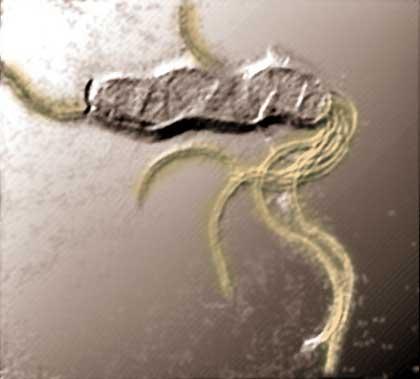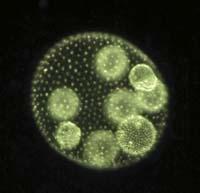Copy genes to develop scourges
2007/04/23 Roa Zubia, Guillermo - Elhuyar Zientzia

Bacteria are very simple living beings. They are usually made up of a cell in the form of a blood cell or cane. However, some species have unique specialized formations such as flagella. They are elongated glutin-shaped structures that help to move the bacteria and, in some cases, intervene in the infectious process of the bacteria. From the morphological point of view, they are one of the most specialized structures that appear in bacteria. In fact, some biologists at the University of Arizona have discovered how these structures were developed in evolution.
The key is the repetition of a gene. The scourges did not form new genes in the bacteria, but they were developed from the copy of a single gene. In fact, in all the bacteria with scourge investigated appears a group of 24 genes that does not appear in those that do not have scourge. The 24 genes are very similar, so they have come to the conclusion that they were copies of a single gene and that later, in evolution, each gene was specialized by small changes.
Photo: NRC.

Gai honi buruzko eduki gehiago
Elhuyarrek garatutako teknologia





